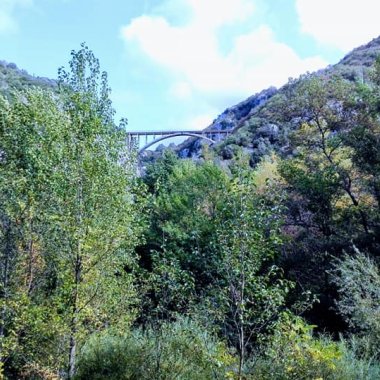the fortress of the immured bride
Not far from Roscigno, Sacco Vecchio is another place rich in history and charm.
The site has certainly been inhabited since the Neolithic. There are traces of Italic hut, a typical construction of pre-Roman settlements, dated back to the late Bronze Age. The shards found are an extraordinary testimony of the late Bronze Age, the Iron Age, the Villanova period, the Etruscan period, the Lucan period, and therefore of how these ancient cultures had merged in the lands of Cilento, before the arrival of the Romans. Just only the ruins are worth a visit.
Other artifacts found in the area attest to the presence of a settlement of the Oenotrians dating back to the 14th - 12th centuries. B.C.
In the Longobard period, around 600 AD, the Duke of Benevento Zottone starts the construction of the castle, according to tradition to immure his wife Saccia: Sacco probably owes its name to her.
The church shows the remains of three single lancet windows, the contours of a door later walled up, and the remains of a bell tower dedicated to Saint Nicholas of Myra, venerated by the Basilian monks in the area since the 10th century.
Sacco Vecchio was abandoned around the 11th century, perhaps due to a pestilence. The inhabitants moved further downstream, where they founded Sacco Nuovo.
It is interesting to note how the church of Sacco Nuovo, built in 1056, two years after the East - West Schism, was not dedicated to Saint Nicholas (oriental saint), but to St. Sylvester, a saint of Latin tradition.
From the top of this ghost town, in addition to the beautiful historical remains, it is also possible to see some of the most extraordinary naturalistic beauties of Cilento: Mount Motola, Sella del Corticato, the Sentinella Pass, the archaeological area of Pruno, the bridge and the course of the Sammaro river.
On the river, it is possible to visit an engineering marvel made by Giulio Krall, a record that really no one expects to find in such a rural and remote place: the bridge over the river Sammaro, the highest single-span bridge in Europe.
Check availability



























